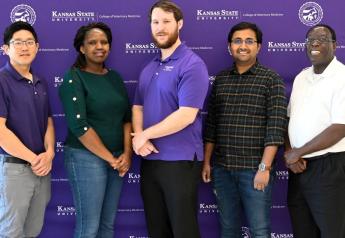Turning Over Rocks

The following commentary does not necessarily reflect the views of AgWeb or Farm Journal. The opinions expressed below are the author's own.
In many cases, veterinarians know exactly how sickness appears in a group of cattle. In other cases the source remains a mystery, and management, by necessity, focuses on treatment. Fortunately, researchers and practitioners continue asking questions and turning over rocks in search of causes, slowly building a management and biosecurity knowledge base.
At the recent Academy of Veterinary Consultants (AVC) summer conference, several presentations highlighted potential sources of cattle morbidity, where further study and increased awareness could help guide future management and biosecurity efforts.
Aaron Stam is a Federally Recognized Tribal Extension Agent for the Seminole Tribe in South Florida, one of the largest cow-calf operations in Florida. Following a mild winter in 2014, Seminole ranchers noted forage was abundant but cows lost body condition and calving rates dropped significantly. Subsequent testing ruled out mineral deficiencies and toxic plants, and the problem remained a mystery until a visiting veterinarian suggested the signs looked like fescue toxicosis.
There is no fescue grown in the area, but with help from the University of Florida and Biomin, the team began testing and found high levels of mycotoxins in local forages, especially Bermuda grass in low, wet areas during the cooler seasons.
Stam helped tribal ranchers run a two-year controlled trial using Biomin’s Biofix supplement to mitigate effects of mycotoxins and saw significant improvements in calving rates and weaning weights. Stam points out that Bermuda grass dominates improved pastures across much of the Southeast, so the problem could be more widespread than realized.
In another presentation, Scott Dee, DVM, PhD, director of research with Pipestone Veterinary Services in Minnesota, summarized his company’s research on survival of viral pathogens in feed ingredients. U.S. companies, he notes, import a wide range of feed ingredients such as soy meal, soy oil cake, distillers’ grains, lysine and others from countries where production systems allow multiple opportunities for exposure of feeds to pathogens.
Previous research demonstrated that the porcine epidemic diarrhea virus (PEDV) can survive in feed. Dee and his colleagues designed their study using a “transboundary model” to test survivability of several other viruses in a variety of feed ingredients. They inoculated feed samples with the viruses and stored the samples in environmental chambers using timetables and temperature controls to simulate the actual time and conditions for feed shipping across common Pacific and Atlantic routes.
The found that some viruses remained very stable in certain feeds. For example, the researchers used senecavirus as a surrogate for FMDV because of federal restrictions. They found that senecavirus survived in most feeds, and the African swine fever virus survived well in soy meal. Some other viral pathogens such as PRRSV, BHV and BVDV did not survive well in feeds. Clearly we need more research in this area and more screening of imported feed ingredients.







